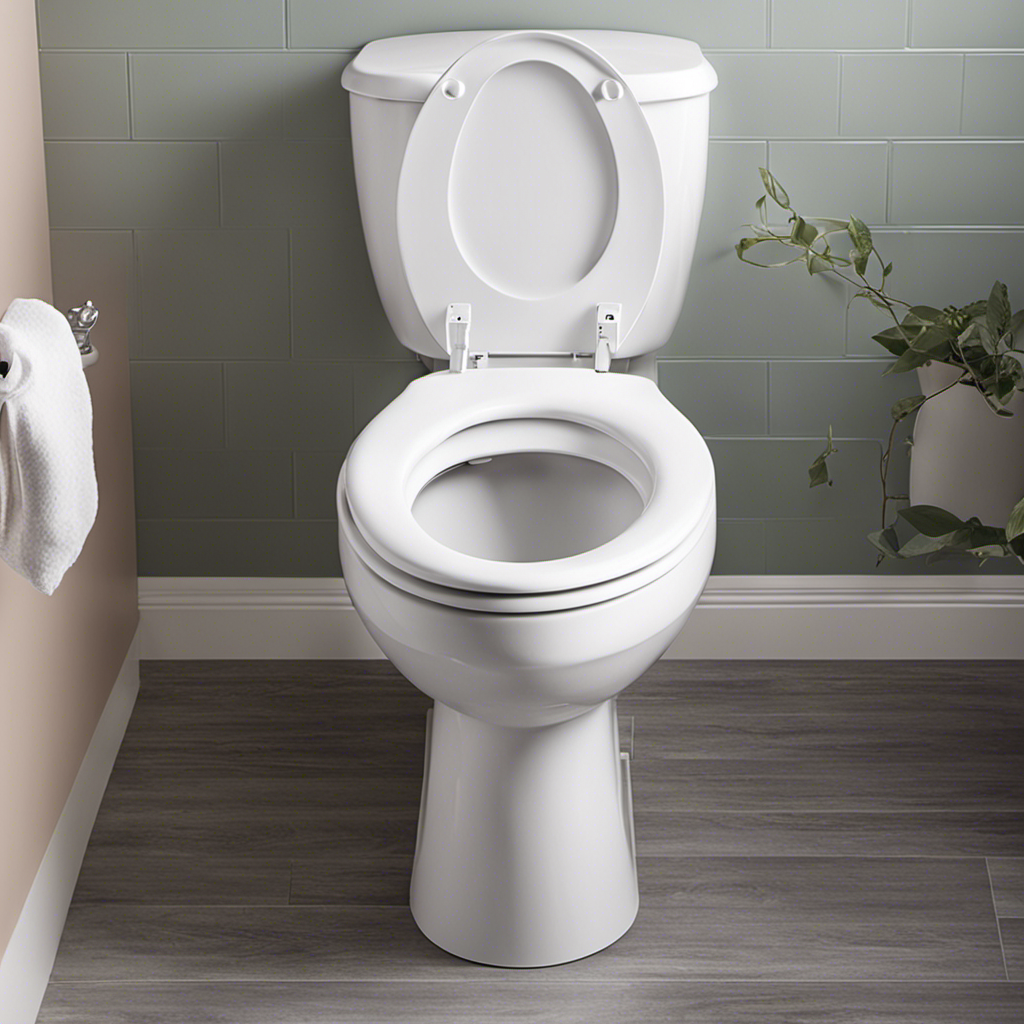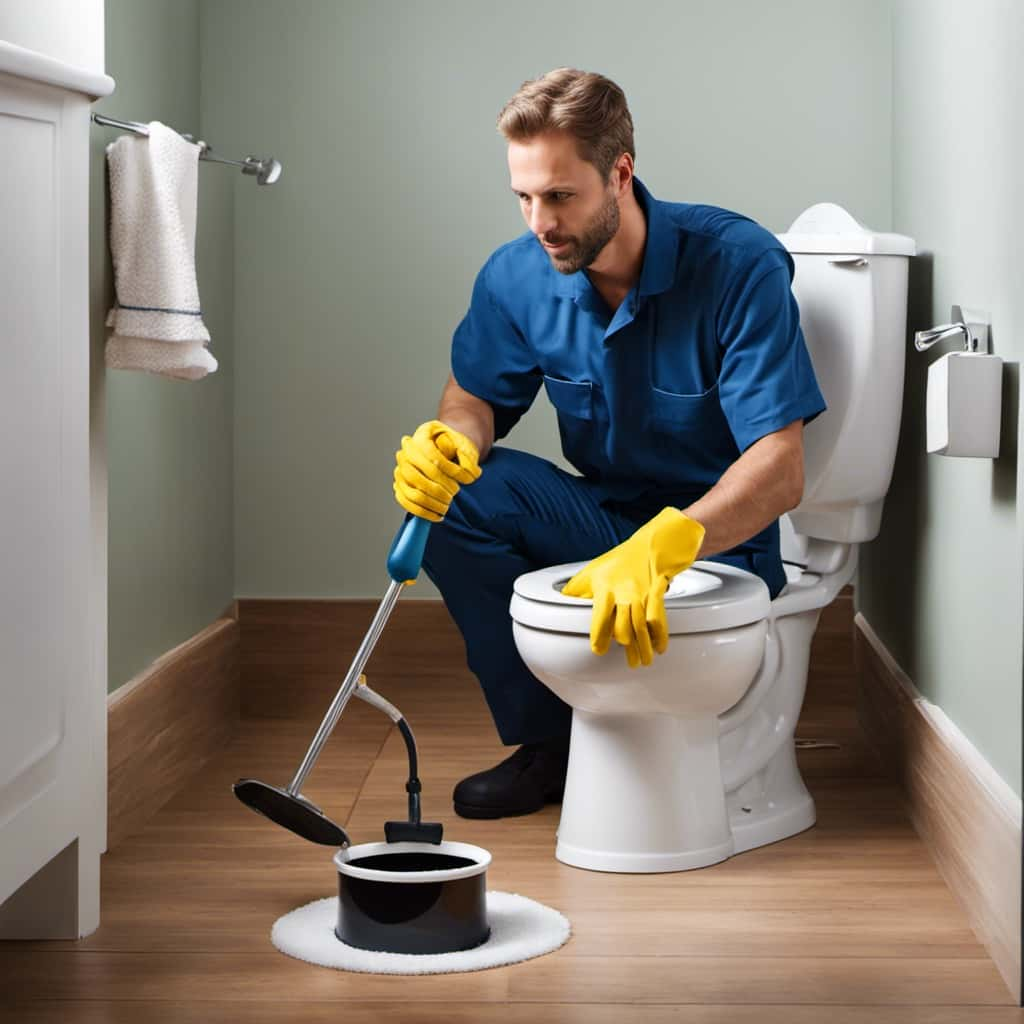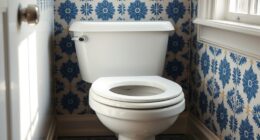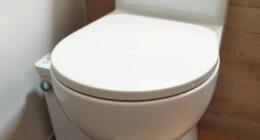Have you ever found yourself in the frustrating situation of flushing twice, only to realize that the stubborn toilet clog persists? We’ve all been there.
In this article, we will delve into the common causes of toilet clogs, provide simple solutions to clear them, and help you identify signs that indicate when professional help may be necessary.
With our expert advice and preventive measures, you’ll soon master the art of keeping your toilet in tip-top shape.
Key Takeaways
- Flushing non-flushable items can cause toilet clogs.
- Simple solutions like using a mixture of baking soda and vinegar or a wire coat hanger can help clear clogs.
- Persistent clogging, multiple drainage problems, unpleasant smells, and backups indicate the need for professional help.
- Preventive measures like educating household members, using the right amount of toilet paper, and regular maintenance can help avoid clogs.
Common Causes of Toilet Clogs
One of the most common causes of toilet clogs is due to objects being flushed that shouldn’t be flushed down the toilet. It’s important to remember that toilets are designed to handle human waste and toilet paper.
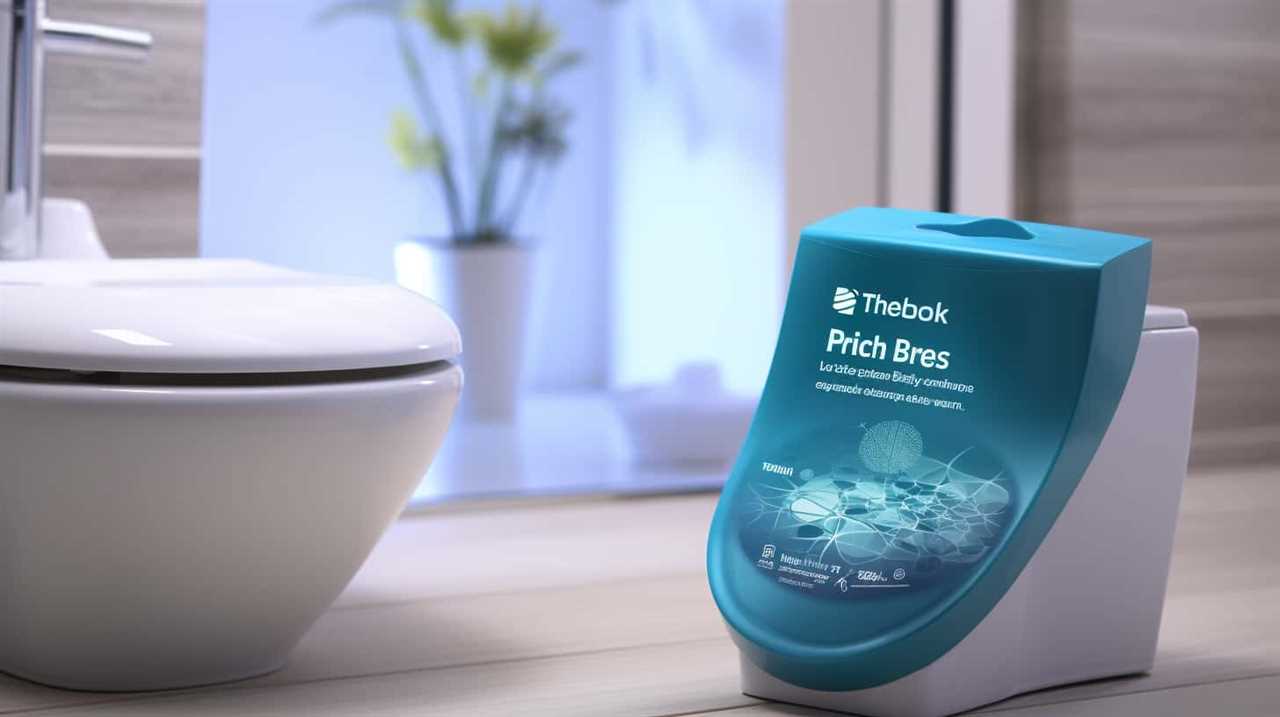
Flushing items such as baby wipes, feminine hygiene products, cotton balls, or paper towels can lead to blockages in the plumbing system. These objects don’t break down easily and can accumulate, causing a backup.
To avoid such issues, it’s recommended to educate everyone in the household about what can and can’t be flushed. Additionally, using toilet unclogging hacks like plungers or drain snakes can help address minor clogs.
However, if the problem persists or becomes more severe, it’s best to contact a professional plumber to address the common toilet plumbing issues effectively.
Simple Solutions to Clear a Clogged Toilet
To address the common issue of a clogged toilet, we can employ simple solutions that will effectively clear the blockage.
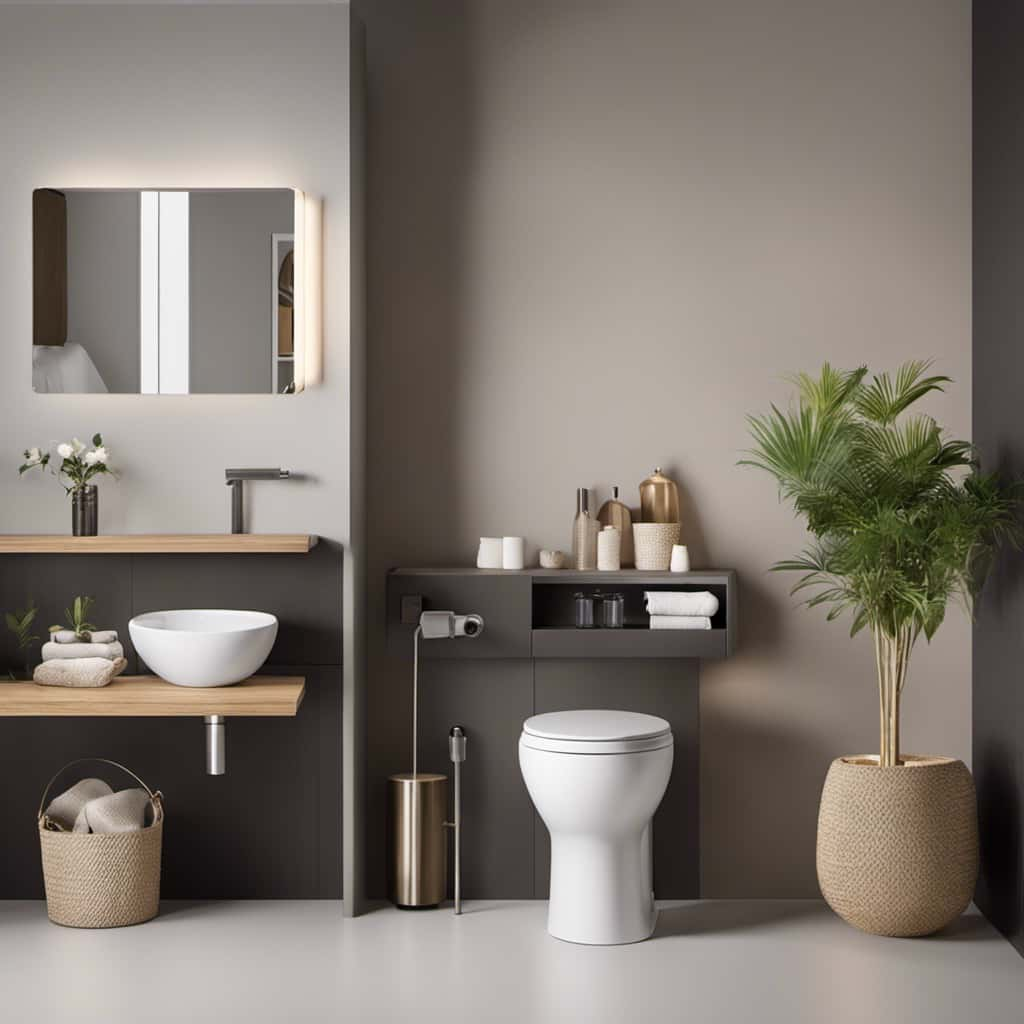
When faced with a clogged toilet, there are several toilet unclogging hacks and DIY toilet plunger alternatives that can be used.
One effective method is to use a mixture of baking soda and vinegar. Start by pouring half a cup of baking soda into the toilet bowl, followed by one cup of vinegar. Wait for a few minutes to let the mixture work its magic, and then flush the toilet.
Another option is to use a wire coat hanger. Unravel the hanger and create a hook at one end. Gently insert the hook into the toilet drain and attempt to dislodge the clog. Remember to be cautious and avoid causing any damage to the toilet bowl.
Signs That You May Need Professional Help
If the simple solutions mentioned above fail to clear the clogged toilet, it may be a sign that we need to seek professional help. Here are four signs that indicate it’s time to call in the experts:

- Persistent clogging: If the toilet keeps getting clogged even after attempting DIY unclogging methods, it’s a clear indication that there’s a more serious issue at hand.
- Multiple fixtures affected: When you notice that other drains in your home, such as sinks or showers, are also experiencing drainage problems, it could be a sign of a bigger plumbing issue that requires professional attention.
- Foul odors: If you detect unpleasant smells coming from your toilet, it could be a sign of a blockage that needs to be addressed by a professional plumber.
- Backups and flooding: When water starts backing up into the toilet bowl or flooding onto the bathroom floor, it’s crucial to call emergency plumber contacts immediately to prevent further damage.
Preventive Measures to Avoid Toilet Clogs
To avoid future toilet clogs, we should take preventive measures that ensure smooth and efficient flushing. Regular toilet maintenance is crucial in preventing clogs. One important step is to avoid flushing items that aren’t meant to be disposed of in the toilet, such as sanitary napkins, wet wipes, or paper towels. These items can easily get stuck in the pipes and cause clogs.
Additionally, it’s important to use the right amount of toilet paper to avoid excessive buildup. Another preventive measure is to periodically clean the toilet and its components to remove any mineral deposits or buildup that can impede the flow of water. Finally, learning and practicing DIY unclogging techniques, such as using a plunger or a plumbing snake, can help prevent minor clogs from becoming major issues.
By following these preventive measures, you can greatly reduce the chances of encountering toilet clogs in the future.
In the subsequent section, we’ll discuss other troubleshooting tips for stubborn toilets.
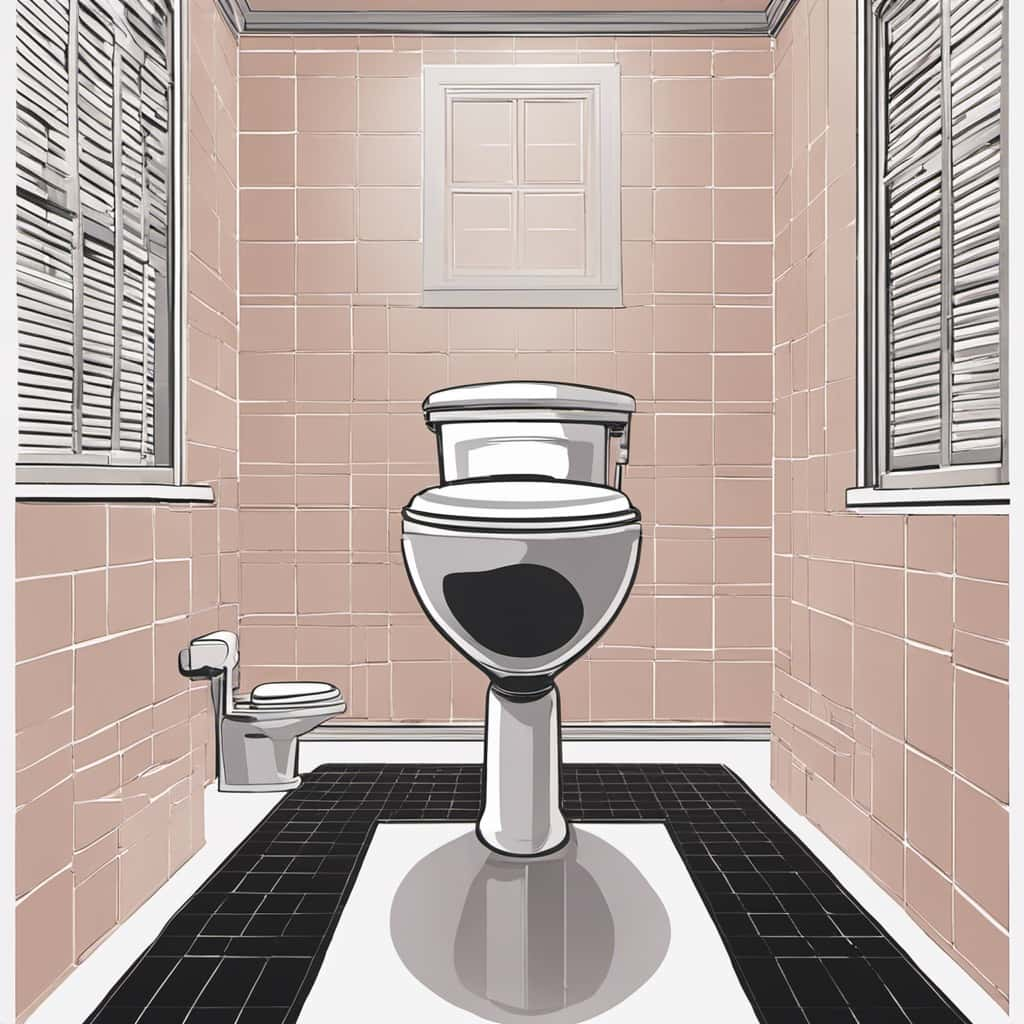
Other Troubleshooting Tips for Stubborn Toilets
When dealing with stubborn toilets, we can try using a plunger to dislodge any clogs. However, if that doesn’t work, there are other troubleshooting tips we can try to fix the problem.
Here are some toilet repair DIY hacks and eco-friendly alternatives to unclog toilets:
- Hot Water and Dish Soap: Pour a bucket of hot water mixed with dish soap into the toilet bowl. Let it sit for a few minutes before flushing. The hot water and soap can help break down the clog.
- Vinegar and Baking Soda: Mix equal parts vinegar and baking soda in a bowl. Pour the mixture into the toilet bowl and let it fizz. After a few minutes, flush the toilet to see if the clog is cleared.
- Wire Coat Hanger: Straighten a wire coat hanger and use it to gently poke and remove any visible clogs in the toilet drain.
- Plumber’s Snake: If all else fails, consider using a plumber’s snake to manually remove the stubborn clog. Insert the snake into the toilet drain and rotate it to dislodge the blockage.
Frequently Asked Questions
How Does a Toilet Actually Get Clogged?
Toilet clogs can happen due to various reasons. Understanding the mechanics of a clog is essential for effective prevention. Identifying common causes such as excessive toilet paper or foreign objects can help prevent future clogs.
Can Using Too Much Toilet Paper Cause a Clog?
Using excessive toilet paper can cause clogs. It’s like trying to fit a square peg in a round hole. Toilet paper alternatives and not flushing non-flushable items can help prevent this issue.

Is It Safe to Use Chemical Drain Cleaners to Clear a Clogged Toilet?
Using chemical drain cleaners to clear a clogged toilet may not be safe due to toxicity concerns. Instead, consider alternative solutions such as using a plunger or a toilet auger to effectively unclog the toilet.
What Are Some Signs That a Clogged Toilet Might Require Professional Assistance?
When dealing with a persistently clogged toilet, it’s crucial to recognize signs that warrant professional assistance. Identifying these indicators and knowing when to call a plumber can prevent further damage and ensure a swift resolution.
Are There Any Natural or Homemade Remedies to Unclog a Toilet?
There are several natural remedies and homemade solutions that can be used to unclog a toilet. These methods often involve using a combination of hot water, baking soda, vinegar, or a plunger.
Conclusion
In conclusion, a clogged toilet can be a frustrating and inconvenient problem to deal with. By understanding the common causes of clogs and implementing simple solutions like using a plunger or a drain snake, you can often clear the blockage on your own.
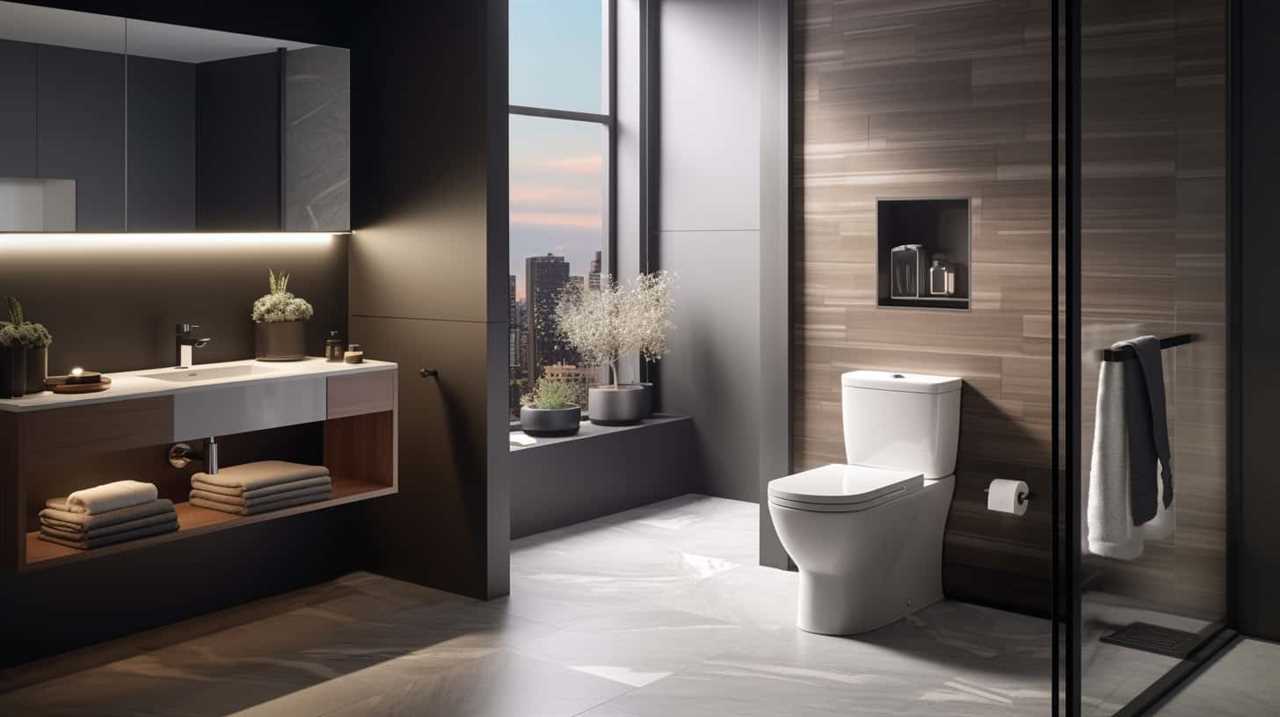
However, if the clog persists or you notice signs of more serious issues, it may be time to seek professional help. Remember, taking preventive measures and practicing good toilet maintenance can help you avoid future clogs.



